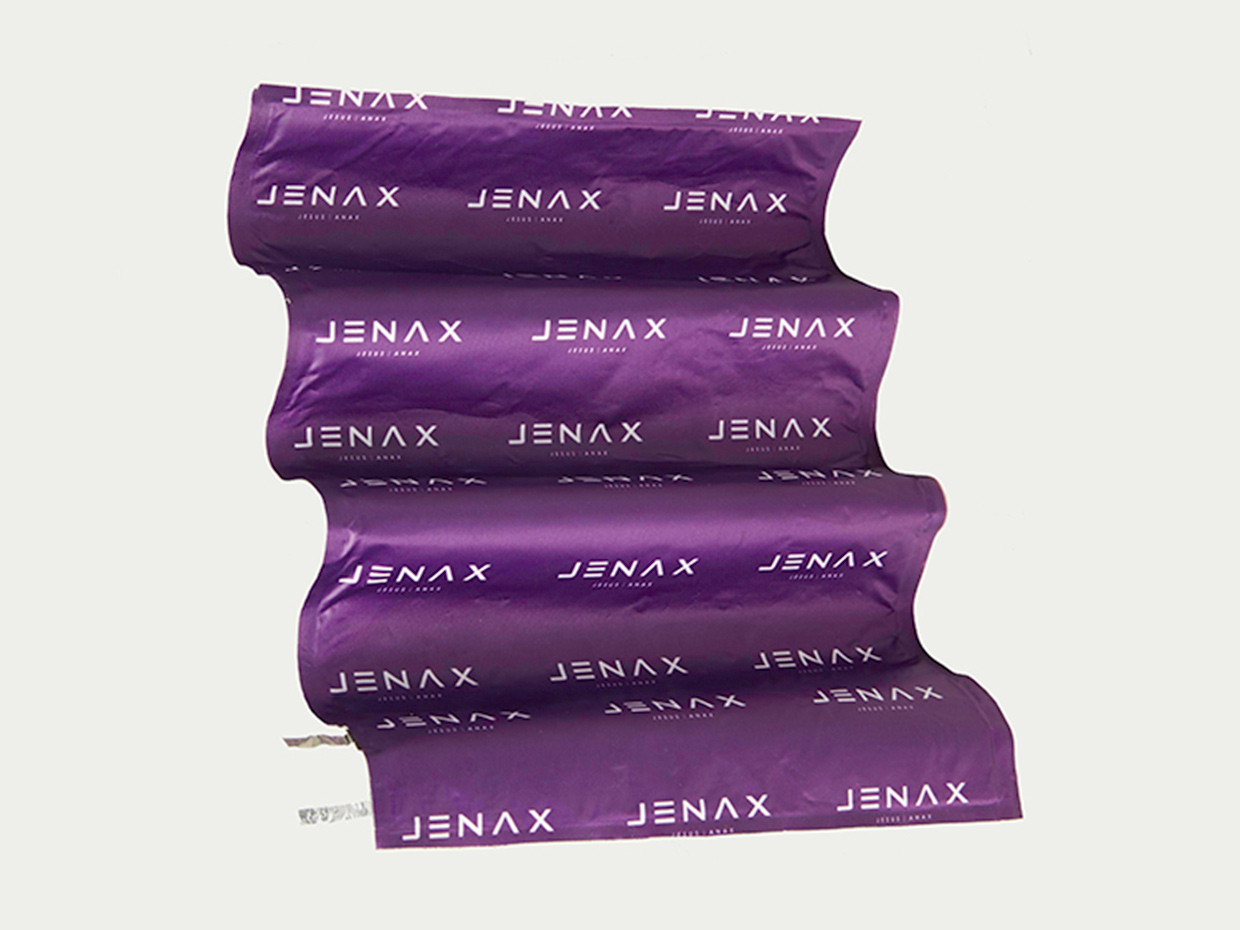
Yet these are precisely the words the company Jenax in South Korea wants you to use when talking about its batteries. The Busan-based firm has spent the past few years developing J.Flex, an advanced lithium-ion battery that is ultra-thin, flexible, and rechargeable.
With the arrival of so many wearable gadgets, phones with flexible displays, and other portable gizmos, “we’re now interacting with machines on a different level from what we did before,” says EJ Shin, head of strategic planning at Jenax. “What we’re doing at Jenax is putting batteries into locations where they couldn’t be before,” says Shin. Her firm demonstrated some of those new possibilities last week at CES 2020 in Las Vegas.
The devices shown by Jenax included a sensor-lined football helmet developed by UK-based firm HP1 Technologies to measure pressure and force of impact; a medical sensor patch designed in France that will be embedded in clothing to monitor a wearer’s heart rate; and wearable power banks in the form of belts and bracelets for patients who must continuously be hooked up to medical devices.
“You don’t want to carry a big, bulky battery on your body all the time. It’s heavy, uncomfortable, and sticks out from your clothes,” says Shin. “That’s when you need very thin, flexible batteries.”
Such batteries may one day power more than just wearables, says Nicholas Kotov, a professor of chemical engineering at the University of Michigan. He points to unmanned aerial vehicles as one example—a flexible battery installed in the wings or landing gear of such a device could free up space in the body for other components.
Apart from Jenax, companies including Panasonic, Samsung, and STMicroelectronics are working to develop flexible batteries of their own. But Jenax claims to have “a higher degree of flexibility” compared with its competitors.
To make batteries flexible, companies play around with the components of a battery cell, namely the cathode, anode, electrolyte, and membrane separator. In the case of Jenax, which has more than 100 patents protecting its battery technology, Shin says the secret to its flexibility lies in “a combination of materials, polymer electrolyte, and the know-how developed over the years.” J.Flex is made from graphite and lithium cobalt oxide, but its exact composition and architecture remains a secret.
Jenax began as a metal manufacturing company in 1991, but later diversified into batteries following the 2008 financial crisis.
Today, Jenax works with clients—B2B companies in consumer electronics, logistics, medical, health, and other sectors across the United States, Europe, and Japan; Shin declined to give specific names citing non-disclosure agreements—to customize batteries according to their needs.
J.Flex can be as thin as 0.5 millimeters (suitable for sensors), and as tiny as 20 by 20 millimeters (mm) or as large as 200 by 200 mm. Its operating voltage is between 3 and 4.25 volts. Depending on the size, battery capacity varies from 10 milliampere-hours to 5 ampere-hours, with close to 90 percent of this capacity remaining after 1,000 charge-discharge cycles. Each charge typically takes an hour. J. Flex’s battery life depends on how it’s used, Shin says—a single charge can last for a month in a sensor, but wouldn’t last that long if the battery was powering a display.
“Overall, I think it’s a very good battery,” says Michigan’s Kotov, who is developing electrolytes for flexible batteries made from lithium and zinc. He is particularly impressed with how safe J.Flex seems.
Batteries can explode when their electrolytes—typically organic fluids that facilitate quick ion movement but are yet incredibly flammable—leak out, or when the cathode and anode come close together, as might be the case when you bend flexible batteries. “The key [to safety] is to find good electrolytes or good ion-conducting membranes,” says Kotov.
To that end, Jenax has recently developed a special semi-solid electrolyte. “We went to one of the biggest causes of battery explosions and made it non-flammable,” says Shin of the new gel polymer, which will be incorporated into all J.Flex batteries this year. Jenax looks to set up its first production line for that battery in South Korea by the end of 2020, a move that will make it cost-competitive with traditional lithium-ion batteries, says Shin.
“We’re changing the paradigm of batteries,” she says. “They’re no longer a component you buy at the end of your product design. Instead, batteries are becoming one of the critical enabling technologies for the final product.”